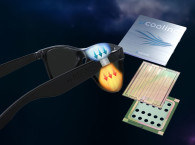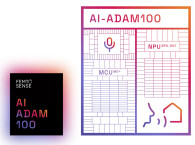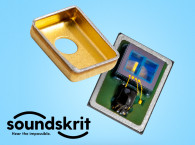
As a leading supplier of solid-state, microspeaker technology (for the moment the only MEMS speaker supplier with commercial products widely available in the market) this innovation of air cooling for ultraportable devices in mobile applications might seem a departure from the company's core activities. But the reality is that the new segment is highly synergistic for xMEMS and leverages the company's substantial IP.
With a silent, vibration-free, solid-state xMEMS XMC-2400 µCooling chip, which measures just 1-millimeter thin, manufacturers can integrate active cooling into smartphones, tablets, and other advanced mobile devices. This active, fan-based micro-cooling (µCooling) solution at the chip level is a first for the industry and will easily find applications in many of the same devices that xMEMS targets with its microspeakers, such as earbuds and hearables.
"Our revolutionary µCooling ‘fan-on-a-chip’ design comes at a critical time in mobile computing," explains Joseph Jiang, xMEMS CEO and Co-Founder. "Thermal management in ultramobile devices, which are beginning to run even more processor-intensive AI applications, is a massive challenge for manufacturers and consumers. Until the XMC-2400, there’s been no active-cooling solution because the devices are so small and thin."

The XMC-2400 measures just 9.26 x 7.6 x 1.08 millimeters and weighs less than 150 milligrams, making it 96 percent smaller and lighter than non-silicon-based, active-cooling alternatives. A single XMC-2400 chip can move up to 39 cubic centimeters of air per second with 1,000Pa of back pressure. The all-silicon solution offers semiconductor reliability, part-to-part uniformity, high robustness, and is IP58 rated.
xMEMS µCooling is based on the same fabrication process as the latest sound-from-ultrasound, xMEMS Cypress full-range microspeaker for ANC in-ear wireless earbuds, which the company confirms will be in production in Q2, 2025 with several customers already committed to the device. xMEMS plans to sample XMC-2400 to customers in Q1, 2025.

"We brought MEMS microspeakers to the consumer electronics market and have shipped more than half a million speakers in the first 6 months of 2024," Jiang continues. "With µCooling, we are changing people's perception of thermal management. The XMC-2400 is designed to actively cool even the smallest handheld form factors, enabling the thinnest, most high-performance, AI-ready mobile devices. It's hard to imagine tomorrow's smartphones and other thin, performance-oriented devices without xMEMS µCooling technology."
xMEMS will begin demonstrating XMC-2400 to lead customers and partners in September 2024 at its xMEMS Live events in Shenzhen and Taipei.
www.xmems.com








